MARKET INSIGHT – September 2025
MARKET INSIGHT
Prime Partners’ monthly analysis of global economic and financial market news.
To choose is to give something up
As the last days of summer draw to a close and the second-quarter corporate earnings season comes to an end, we can say that this period has been a good one for the financial markets in 2025. The major stock indices have risen in recent weeks, but have not skyrocketed, despite solid corporate results, especially in the technology sector, and Jerome Powell’s speech in Jackson Hole, which now opens the door to a first rate cut in September.
Beyond these positive factors, the last few weeks have not been all good news, far from it. The US economy is now showing clear signs of slowing down, although the labor market has not yet really deteriorated. Another major concern in the United States is the initial inflationary impact of tariffs, which are now affecting the prices of many products.
The French language is rich in subtleties and allows for infinite variations and other stylistic effects for those who master it. Thus, Balzac wrote, “To choose! That is the flash of intelligence. Are you hesitating? That says it all: you are mistaken.” (L’Illustre Gaudissart, 1833). Although it is unlikely that Jerome Powell and his colleagues at the Federal Reserve will be poring over the writings of the famous French author during their meeting, the fact remains that they are faced with a choice that they too probably want to be seen as a flash of intelligence. The current configuration of the US economy is unprecedented. Indeed, economic slowdown goes hand in hand with inflation, the latter being created exogenously by the introduction of tariffs by the Trump administration. The central bank must therefore choose between supporting the country’s economic momentum by lowering interest rates or keeping them high in order to combat rising inflation. Added to this dilemma is the constant pressure from the US president, whose vitriolic statements about the Fed chairman have become commonplace. Donald Trump recently took this pressure a step further by announcing the immediate dismissal of Lisa Cook, one of the Federal Reserve governors who had voted in recent months to keep interest rates unchanged. Ms. Cook intends to continue her term in office.
We anticipate a hundred basis points of rate cuts over the next nine months, until the end of the current Fed chair’s term
As we have been writing regularly in this newsletter for several months, inflation and employment in the United States are the two key parameters to monitor when managing asset allocation and gauging market behavior. As time passes, the degree of uncertainty surrounding tariffs and the financial markets’ reaction to them has diminished. In other words, the rules of global trade are becoming clearer and investors are adapting to them. One effect of this has been to increase the concentration of the S&P 500 index, whose weighting of a few large technology companies now gives it a status fairly similar to that of its European counterparts in terms of bias. Welcome to the world of concentrated equity indices, whose performance is no longer necessarily an accurate indicator of a country’s economic health. When assessing the outlook for the S&P 500, it is now useful to bear in mind that the US economic environment is no longer the only factor to consider and that the performance of companies such as Nvidia and Microsoft, to name but two, has become an essential parameter.
Jerome Powell’s speech following the Jackson Hole symposium was eagerly awaited. Between weak economic momentum and looming inflation, lower interest rates appear to be one of the last catalysts for the equity market this year. This will likely begin in September and then become more data-dependent. We anticipate a hundred basis points of rate cuts over the next nine months, until the end of the current Fed chair’s term.
Still on the American side, we are closely monitoring consumer behavior, and recent statements by some major CEOs have been instructive in this regard. Between a job market in “no hire, no fire” mode and consumer prices trending upward, American consumers are becoming even more selective in their spending. Indeed, the CEOs of several airlines, as well as the head of Walmart, stated when publishing their results that they were seeing greater difficulties among their customers with the lowest purchasing power, as well as a shift towards entry-level products for certain purchases. This is hardly surprising given the latest economic data, but it does provide concrete confirmation of the US slowdown.
If we now turn our attention to the other side of the Atlantic, the news may seem, at first glance, less eventful, as Europe does not have a “chief agitator” of the caliber of the US president. It should nevertheless be noted that, despite a clearer economic outlook and, all in all, decent prospects, the situation in France may once again become problematic following the vote of confidence requested by Prime Minister François Bayrou. If he does not prevail, which is highly likely, France will once again experience a period of political uncertainty that the markets have already begun to sanction. This is not at all good news for the EU, whose economies suffer from a very different mix of sectors than that of the US, with technology playing only a minor role, unlike segments that are heavily impacted by the new tariff reality or the persistent apathy of Chinese consumption. We are of course referring here to the most cyclical sectors, such as luxury goods, automotive and chemicals, where Europe has many flagship companies.
On a positive note, however, Ms. Lagarde’s task seems simpler than Mr. Powell’s, and the political context in which the ECB operates is also unlike that in the United States.
Obviously, the downward trajectory of the dollar is a supporting factor, but a combination of other elements explains the very strong performance of emerging markets in 2025
Finally, a few words on emerging economies, whose stock markets had a good summer, in line with the first six months of the year. Obviously, the downward trajectory of the dollar is a supporting factor, but a combination of other elements explains the very strong performance of emerging markets in 2025. Firstly, China, whose indices have rebounded strongly on the back of the technology sector, but also, it must be said, on the impression that, rather than buying apartments on spec or European luxury bags, the Chinese have started (or resumed) investing in their own market. India, for its part, is still digesting the huge upswing experienced by its stock market post-Covid, particularly in 2023 and 2024. In addition, the tariff situation with the United States is complicated, with relations between Mr. Trump and Mr. Modi at this stage being much cooler than many had expected. On the other hand, no one questions the country’s immense potential and the dynamism of its very large (and young!) population. Another positive point for the emerging bloc is the significant involvement of certain technology stocks linked to the development of artificial intelligence. From this perspective, Taiwan and South Korea, in particular, are strengthening the appeal of the emerging region for international investors.
Our portfolios had a pleasant summer, generating incremental returns across the various asset classes we hold, with little volatility. This brief overview encourages us to maintain a constructive stance for the rest of the year. We are therefore increasing our exposure to US equities by 2% at the start of September, encouraged by the combination of upcoming rate cuts and excellent second-quarter results in the technology sector. On the bond side, we continue to favor credit, whether high-quality corporate bonds, high-yield bonds, or emerging market issuers. Gold remains a pillar of our strategy and looks set to continue to perform well in a wide range of scenarios, particularly one involving further rate cuts. Finally, with our alternative allocation more diversified than ever, we are prepared for greater volatility and a third-quarter earnings season that is likely to be more impacted by tariff-induced price increases.
Like the Fed, we also have to make choices when it comes to investing and thereby give up on some alternatives. This year, we are once again embracing cautious optimism and continue to see upside potential in the equity markets. We hope that our choices will prove to be a “flash of intelligence,” as Honoré de Balzac put it.

